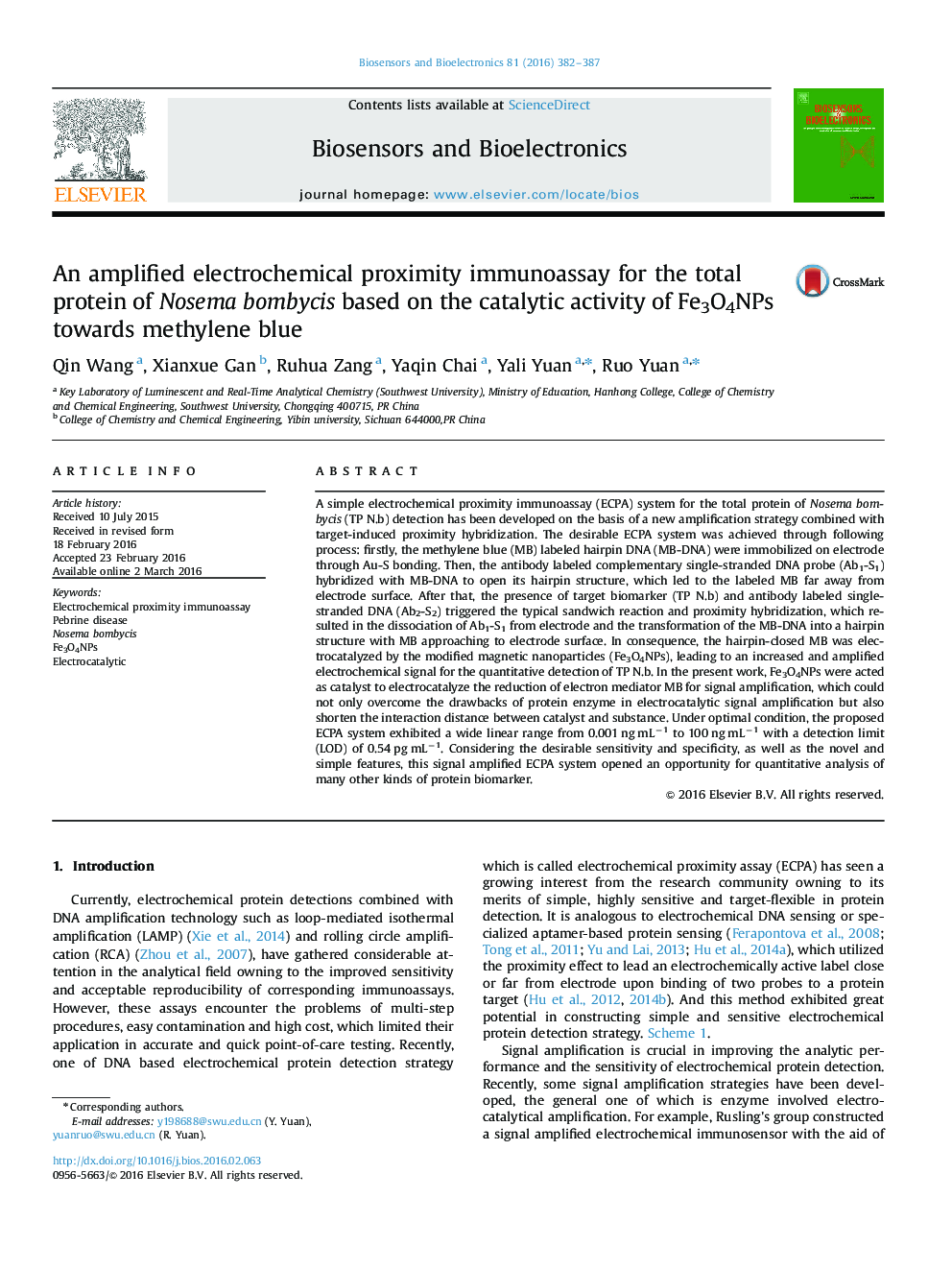| Article ID | Journal | Published Year | Pages | File Type |
|---|---|---|---|---|
| 7230625 | Biosensors and Bioelectronics | 2016 | 6 Pages |
Abstract
A simple electrochemical proximity immunoassay (ECPA) system for the total protein of Nosema bombycis (TP N.b) detection has been developed on the basis of a new amplification strategy combined with target-induced proximity hybridization. The desirable ECPA system was achieved through following process: firstly, the methylene blue (MB) labeled hairpin DNA (MB-DNA) were immobilized on electrode through Au-S bonding. Then, the antibody labeled complementary single-stranded DNA probe (Ab1-S1) hybridized with MB-DNA to open its hairpin structure, which led to the labeled MB far away from electrode surface. After that, the presence of target biomarker (TP N.b) and antibody labeled single-stranded DNA (Ab2-S2) triggered the typical sandwich reaction and proximity hybridization, which resulted in the dissociation of Ab1-S1 from electrode and the transformation of the MB-DNA into a hairpin structure with MB approaching to electrode surface. In consequence, the hairpin-closed MB was electrocatalyzed by the modified magnetic nanoparticles (Fe3O4NPs), leading to an increased and amplified electrochemical signal for the quantitative detection of TP N.b. In the present work, Fe3O4NPs were acted as catalyst to electrocatalyze the reduction of electron mediator MB for signal amplification, which could not only overcome the drawbacks of protein enzyme in electrocatalytic signal amplification but also shorten the interaction distance between catalyst and substance. Under optimal condition, the proposed ECPA system exhibited a wide linear range from 0.001 ng mLâ1 to 100 ng mLâ1 with a detection limit (LOD) of 0.54 pg mLâ1. Considering the desirable sensitivity and specificity, as well as the novel and simple features, this signal amplified ECPA system opened an opportunity for quantitative analysis of many other kinds of protein biomarker.
Related Topics
Physical Sciences and Engineering
Chemistry
Analytical Chemistry
Authors
Qin Wang, Xianxue Gan, Ruhua Zang, Yaqin Chai, Yali Yuan, Ruo Yuan,
